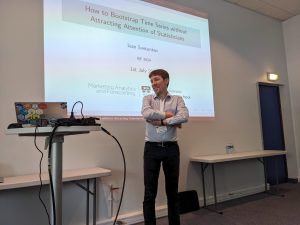On 1st July, I presented my ongoing work on time series bootstrap and its impact on prediction intervals at ISF2024 in Dijon, France.
Abstract: Bootstrap is extensively used in statistics and machine learning for cross-sectional data to account for uncertainty about the data, model form, and parameter estimates. However, conventional methods may not be suitable for time series data due to autocorrelation and specific dynamic structures. Over the years, various approaches have been developed to address this issue. Some assume specific models (e.g., STL), while others are non-parametric (e.g., Maximum Entropy Bootstrap, MEB). However, the former can be overly restrictive, while the latter may not perform well in case of outliers and external drivers. To address these issues, we propose a non-parametric bootstrap approach inspired by MEB, which does not assume any structure in the data yet creates reasonable copies of existing time series of different nature. These copies can be utilised in bagged ETS/ARIMA or any other approach involving small sample uncertainty. We demonstrate how the proposed bootstrap works using real-time series examples and assess improvements it brings in terms of forecasting accuracy compared to conventional approaches.
Here are the slides of the presentation.
And here is me, trying not to attract attention of statisticians:




